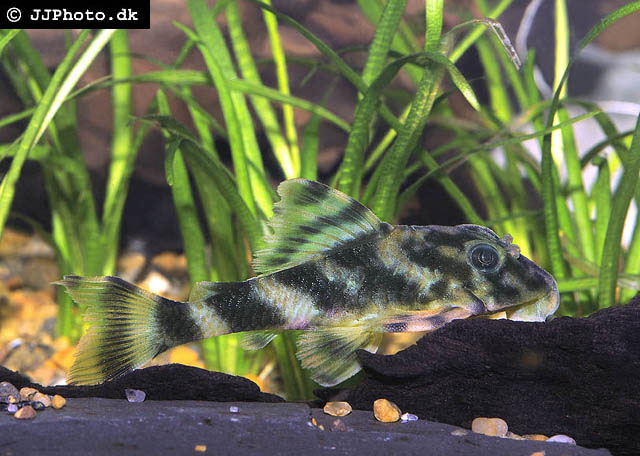| Loricariidae (Armored catfishes), subfamily: Hypostominae |
| 9.69 cm SL (male/unsexed) |
|
benthopelagic; freshwater |
| South America: Río Ventuari in Venezuela and Río Iniridá in Colombia. |
|
Peckoltia lineola can be identified from all other Peckoltia except P. braueri, P. caenosa, P.
cavatica, and P. vermiculata by having vermiculations on the head and snout. Peckoltia lineola can be identified from P. braueri, P. cavatica, and P. vermiculata by having thick vermiculations almost as wide as the pupil on the compound pterotics and snout (vs. thin vermiculations much narrower than the pupil diameter and by also having large spots on the compound pterotics and snout (vs. no spots); from P. braueri and P. cavatica by lacking an orange band in the dorsal fin; from P. cavatica by having the vermiculations cross the bones like the compound pterotic (vs. dark lines only outlining the plates and bones of the head); from P. caenosa by having dark bands in the fins (vs. light spots), by having long, thick, longitudinal lines on the abdomen (vs. vermiculations with a random orientation), by having the light interspaces on the snout of about the same width of the black spots and lines (vs. light vermiculations narrower than dark ones), and by having the light bands of the caudal at least 50% width of dark bands (vs. 25%); and from P. vermiculata by not having the vermiculations coming from a central point on the parieto-supraoccipital. Peckoltia lineola is similar to P. brevis except that some of the spots on the head and snout combine to form lines (vs. all spots separate) and the spots on the abdomen combine to form long, thick longitudinal lines (vs. spots separate). |
| Found in rocky riffles (Ref. 77026). |
|
Vulnerable (VU); Date assessed: 21 August 2020 (B1ab(iii,v)+2ab(iii,v)) Ref. (130435)
|
| harmless |
Source and more info: www.fishbase.org. For personal, classroom, and other internal use only. Not for publication.

